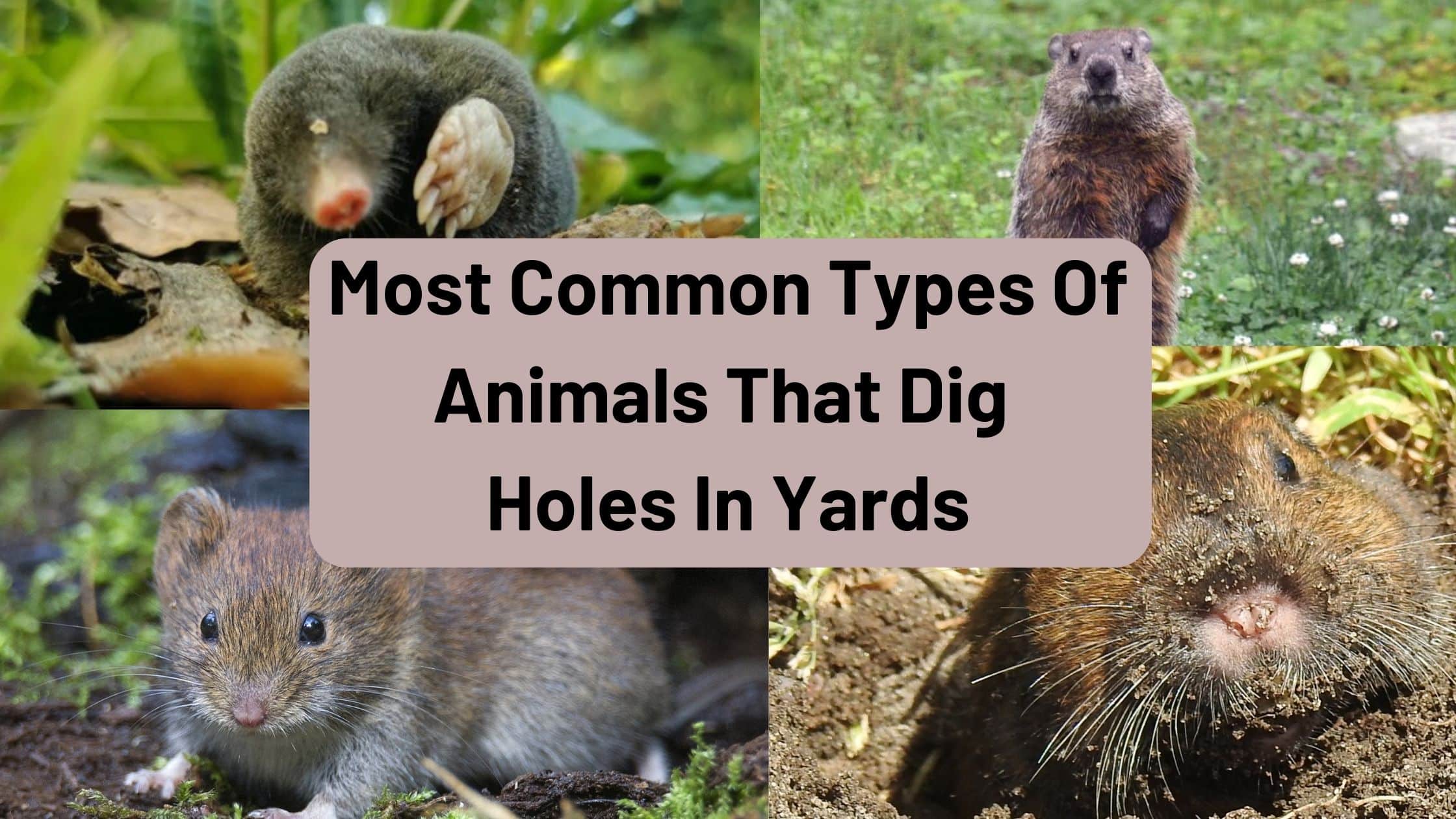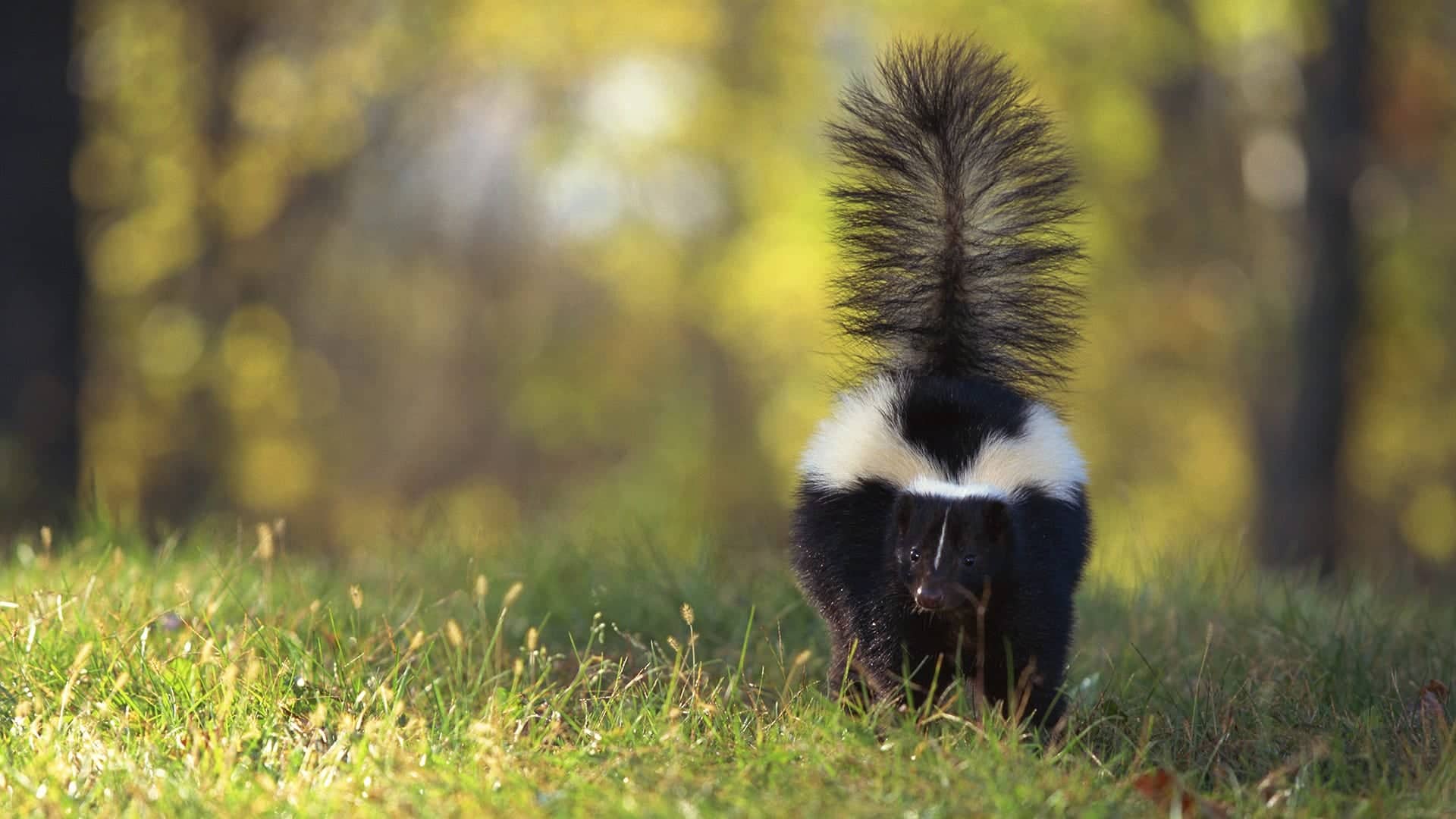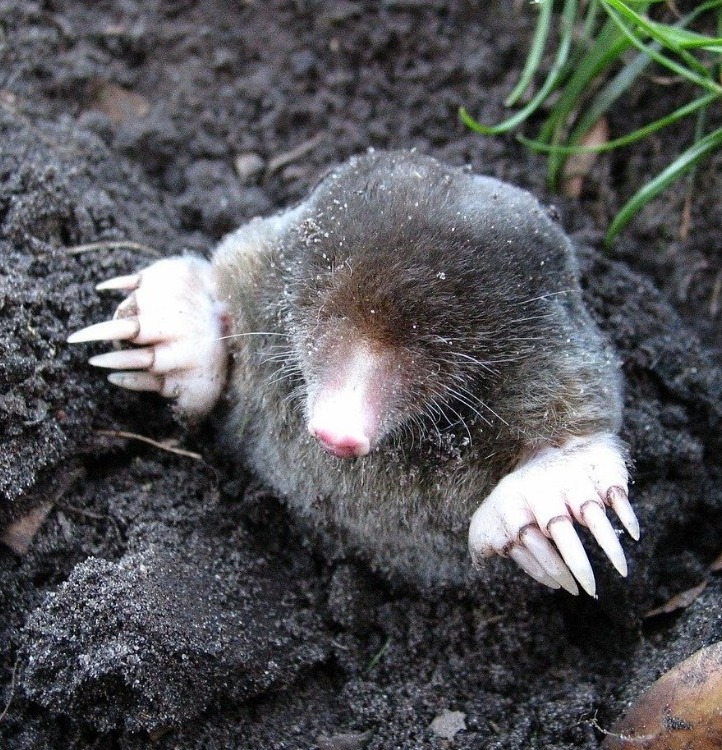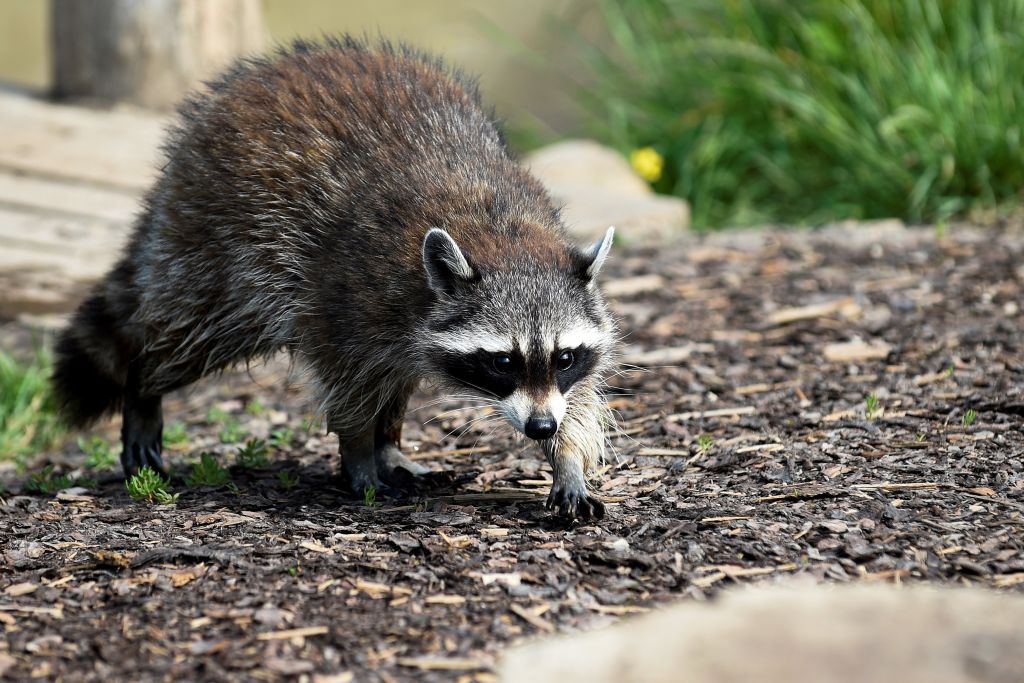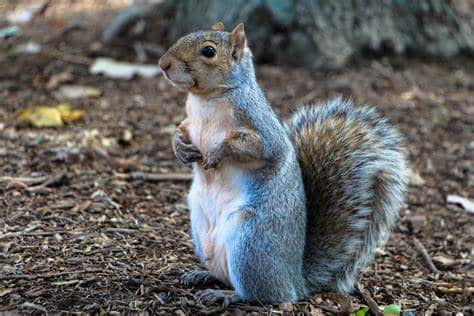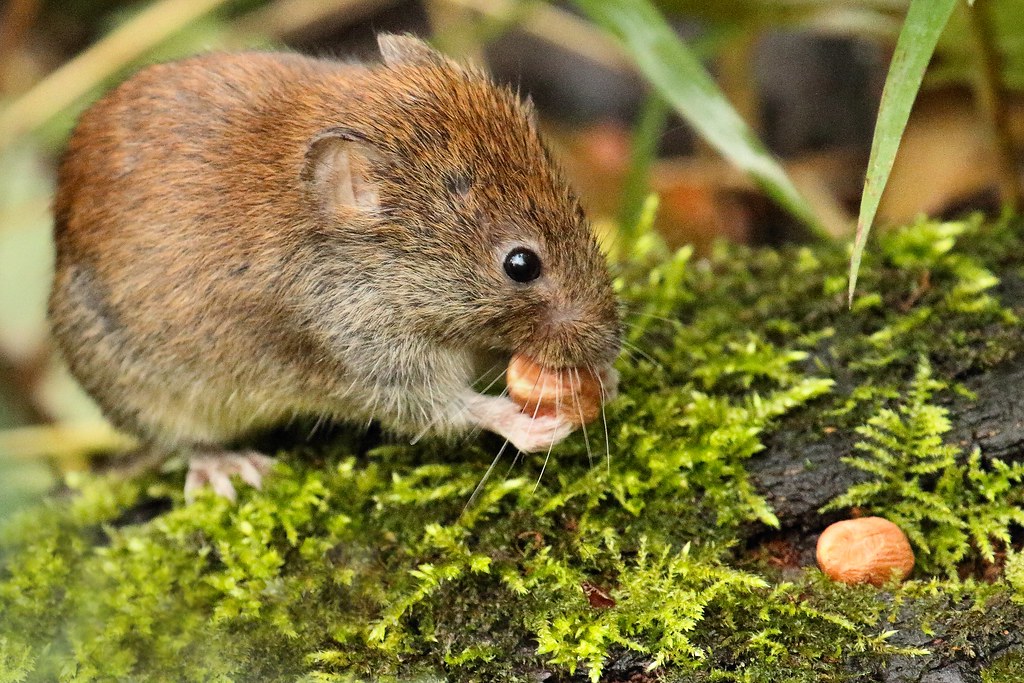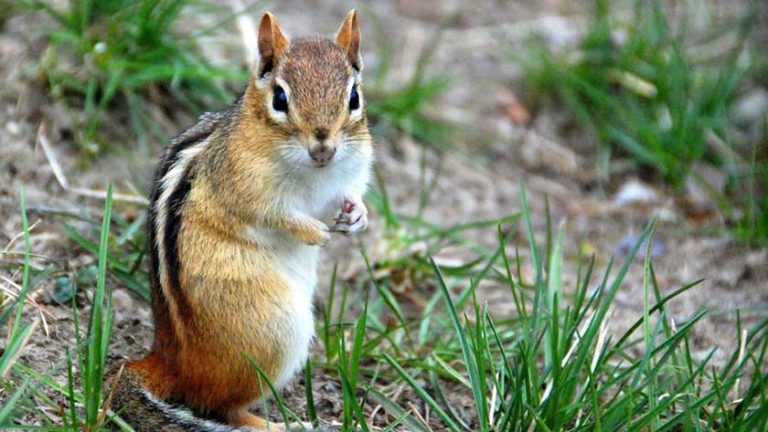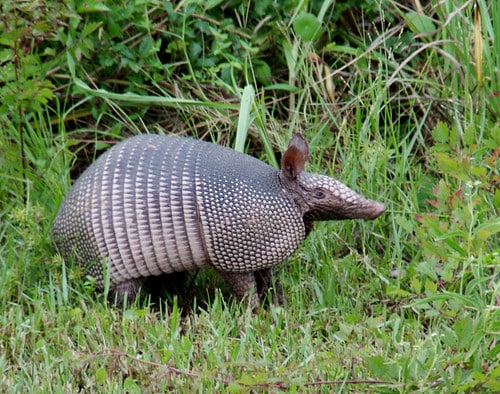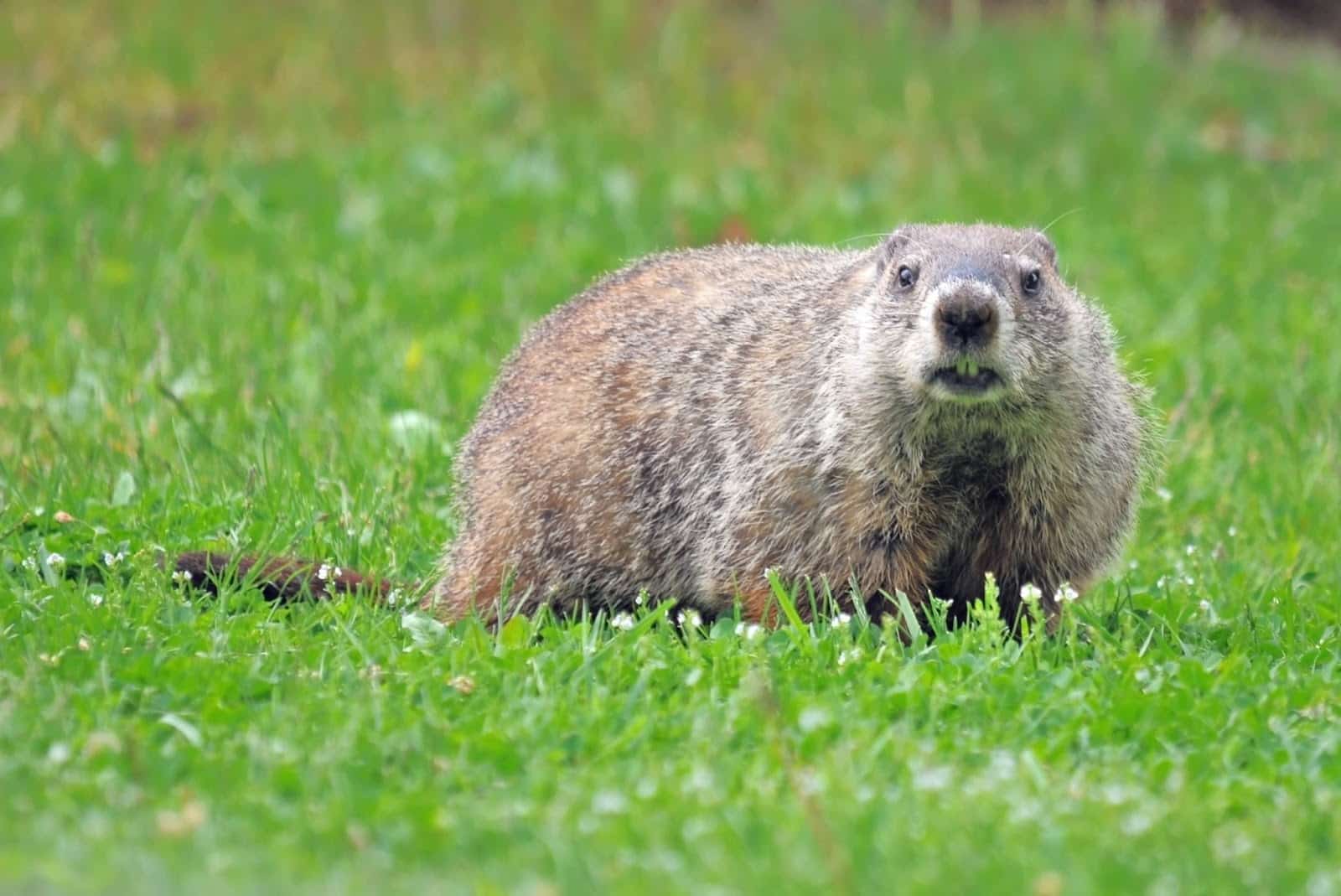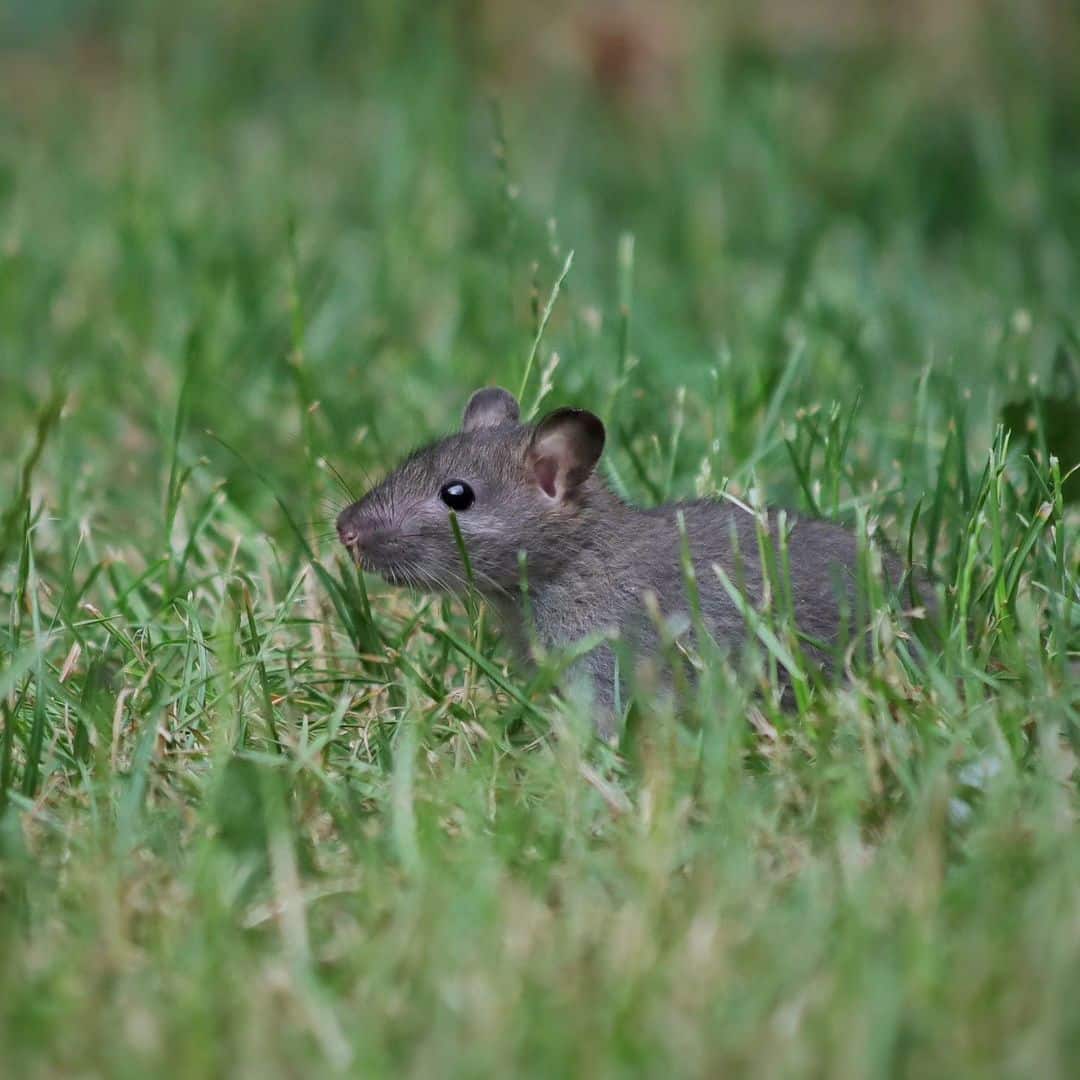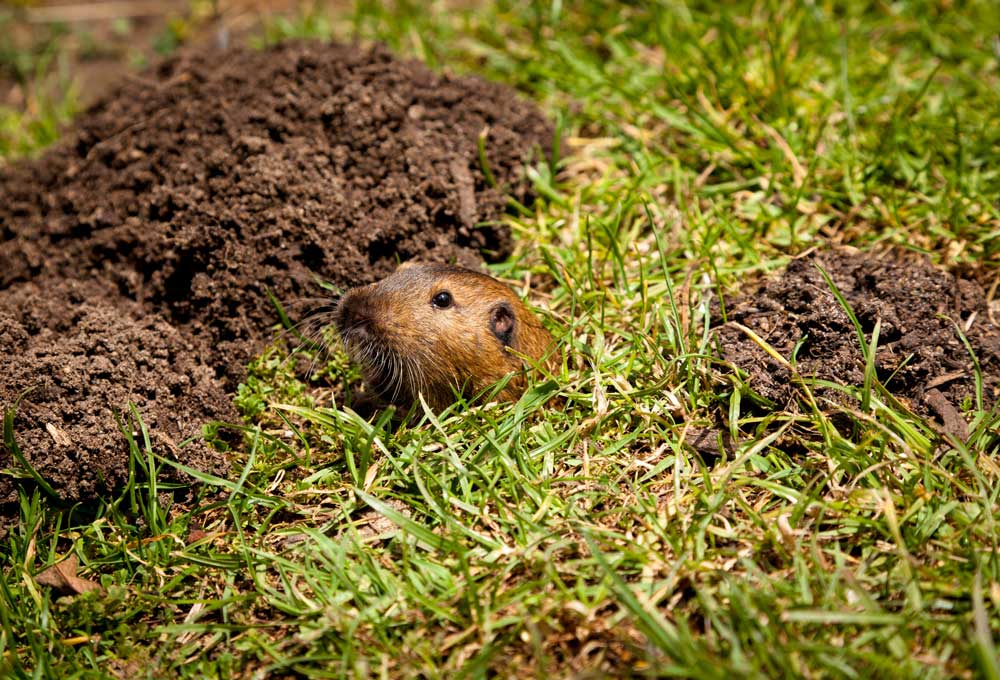Are unsightly holes undermining all the hard work you have put into developing an aesthetically appealing, practical yard? You are not alone. Discovering holes in your garden is frustrating but a common problem.
Before tackling the issue, what animal is responsible for these mysterious holes? Many animals could turn your yard into their excavation site.
Unveiling the culprit behind the holes in your yard is an integral step to effectively resolving the issue and restoring your yard to its former glory. So, let’s explore the most common animals that tend to dig holes in yards.
10 Most Common Types Of Animals That Dig Holes In Yards
1. Skunks
Easily identified for their distinctive white and black stripes and pungent smell glands, skunks are skilled diggers who can wreak havoc searching for food. These tiny mammals dig small, cone-shaped holes around 3-4 inches in diameter in pursuit of grubs, insects, and larvae beneath the surface.
Since they are nocturnal, you may not witness them in action, but you can deduce their presence by their distinctive dig patterns.
Related Post:
How to Get Skunk Smell Off Your Dog
How To Get Rid Of Skunks
- Eliminate attractions like uncovered trash cans and pet food left outdoors.
- Block access to areas where skunks might nest or seek shelter, such as under decks or sheds, by sealing openings and installing barriers.
- Apply natural repellents like ammonia-soaked rags, predator urine, or commercial skunk repellents around your yard’s perimeter.
- Install motion-activated lights.
- Capture them with live traps.
2. Moles
Moles may be tiny, elusive mammals, but they can cause significant problems in your yard by constructing extensive underground tunneling systems. Mole tunnels typically run just under the ground. You can identify them by raised ridges that crisscross your lawn, resembling a network of raised lines.
Related Posts: How To Get Rid of Moles In Yard and Garden
Mole activity in your yard will leave the area aesthetically unappealing due to the unsightly mounds and tunnels.
How To Get Rid of Moles
- Set up traps specifically designed to capture moles.
- Use repellents like castor oil and dawn soap solution to deter moles.
- Flood their tunnels with a garden hose.
- Install mesh or hardware cloth barriers beneath the soil to prevent moles from burrowing into certain areas.
- Remove food sources like insects, grubs, and earthworms.
3. Raccoons
Another notorious suspect for the holes in your yard is raccoons. These troublesome mammals do not create tunnels; instead, they dig holes looking for food and shelter, leaving scattered holes and a mess in their wake.
Raccoon’s holes are shallow and often larger and more scattered than those created by other animals. Raccoons usually look for insects, worms, or small vertebrates around garden areas, trash cans, or mulched areas.
Apart from the holes, another telltale sign of raccoon presence in your yard is the presence of raccoon paw prints identifiable by their distinct hand-like shape with five toes around the digging sites.
How To Get Rid of Raccoons
- Don’t leave your pet’s food outside.
- Tightly close garbage cans.
- Close off potential hiding spots or den sites like crawl spaces, attics, or beneath decks and porches to discourage raccoons from nesting.
- Deter raccoons by installing motion-activated lights or sound devices that startle raccoons.
- Install fences or barriers.
- Deploy commercial or homemade repellents such as ammonia-soaked rags or natural sprays near potential entry points.
4. Squirrels
These agile, bushy-tailed creatures are a lovely sight to watch as they leap from one tree to another. However, you won’t find them cute once they start digging holes in your yard.
Squirrels dig small, shallow (about 1-2 inches in diameter) holes typically scattered across the lawn to bury nuts or search for stored food. You will often find squirrel tracks featuring four front-clawed toes and five hind ones.
Read More: How To Get Rid Of Squirrels In The Attic
How To Get Rid of Squirrels
- Trim branches that hang over your yard to limit squirrel entry points.
- Deploy natural deterrents like cayenne pepper or predator urine around the affected areas to discourage squirrels from digging.
- Cover bulbs and young plants with wire mesh or protective covers to prevent squirrels from digging them up.
- Apply commercial repellents or odor-emitting homemade sprays.
- Install fences or barriers around specific areas to prevent squirrels from accessing those spots.
5. Voles
Voles may seem innocuous, but they can cause significant damage to your yard with their underground tunneling and surface digging. These small mouse-like rodents create networks of tunnels and leave small, round holes about 1-2 inches in diameter on the surface.
If voles are the reason for the holes in your garden, you will often find them near vegetation or along paths. You may also find gnaw marks on tree bark or garden plants.
Related Post: How To Get Rid Of Voles In Your Yard Naturally
How To Get Rid of Voles
- Clear dense vegetation or mulch to reduce vole hiding spots.
- Create barriers around the base of trees and plants with wire mesh or hardware cloth to prevent voles from gnawing on them.
- Regularly mow the lawn and cut tall grasses to reduce hiding places and discourage vole activity.
- Apply commercial repellents or set up snap traps specifically designed for voles in areas where they’re active.
- Attract natural predators of voles, such as snakes, owls, or certain types of hawks, to help control their population.
6. Chipmunks
When the digging habits of these adorable, playful small rodents begin impacting your yard, you will no longer want them in your home. Chipmunks create small, shallow holes, usually 1-2 inches in diameter, to dig burrows or forage for food.
They also deposit the excavated soil from their holes nearby, creating small mounds or piles of dirt around the openings.
How To Get Rid of Chipmunks
- Remove food sources like spilled birdseed, pet food, or fallen fruits/nuts.
- Remove clutter or dense vegetation chipmunks could use as hiding or nesting spots.
- Deploy commercial repellents or natural substances like garlic, pepper spray, or predator urine near chipmunk activity areas to deter them.
- Install wire mesh or hardware cloth barriers around gardens or specific areas.
- Capture chipmunks and relocate them to a suitable area away from your property with live traps.
Read More: How To Repel Snakes From Your Yard
7. Armadillos
Armadillos primarily inhabit Central America and the southern USA. They are excellent diggers, thanks to their claws and leathery armor.
Armadillos create shallow (about 3-5 inches deep and 5-7 inches wide) conical holes scattered across the yard in search of insects, grubs, and other small invertebrates. Moreover, they create larger burrows with more extensive holes that lead into their underground tunnels for shelter.
When Armadillos are not burrowing, they are looking for food, with their favorite meal being the bugs in gardens or lawns.
How To Get Rid of Armadillos
- To deter armadillos, install fencing around vulnerable areas, like gardens or under porches.
- Eliminate insects and grubs from your yard.
- Startle Armadillos with motion-activated lights or sound devices.
- Discourage Armadillos with commercial repellents or natural substances like castor oil, garlic, or predator urine near their digging sites.
- Set up live traps baited with mealworms or other insects.
8. Groundhogs
You really don’t want groundhogs burrowing in your yard. They create large, deep holes (around 10-12 inches in diameter) with extensive underground tunnels capable of causing structural damage and soil shifting.
Groundhog burrows’ entrances are often found along fences, near structures, or open areas. The burrows can extend up to 6 feet deep with multiple tunnels and chambers for nesting and hibernating.
How To Get Rid of Groundhogs
- Install fences made of wire mesh or buried with an L-shaped bottom to prevent groundhogs from burrowing underneath.
- Remove food sources such as vegetables, fruits, or ornamental plants groundhogs might feed on in your yard.
- Fill abandoned burrows with soil, rocks, and debris to deter groundhogs from reusing them.
- Deter groundhogs from entering your yard with commercial repellents or natural substances like garlic or castor oil.
- Capture groundhogs with live traps baited with fruits or vegetables—once captured, release groundhogs in suitable wooded areas far from your property.
9. Rats
Rats’ burrowing and digging behavior can result in health issues and structural destruction. Their small, 2-3 inch diameter holes are often located near structures, walls, or trash areas. Rats also build extensive burrows with multiple entrances, characterized by holes leading into underground tunnels.
How To Get Rid of Rats
- Eliminate rat entry points by sealing gaps, cracks, or holes around your home with wire mesh, cement, or metal flashing.
- Keep outdoor areas clean and free of food debris, secure garbage in tightly sealed containers, and avoid leaving pet food outside.
- Trim bushes and trees.
- Set up traps and baits.
10. Gophers
Gophers develop small holes around 2-4 inches in diameter, surrounded by a crescent-shaped mound. Their complex underground tunnels can undermine the stability of the ground and damage plant roots.
Related Post:
How To Get Rid of Gophers
- Install wire mesh barriers or underground fencing around vulnerable areas.
- Set up gopher traps, baited with fruits or vegetables, in their active tunnels.
- Flood gopher tunnels with water or using repellents that emit castor oil.
- Plant resistant plants.
Summary
Burrowing and digging animals may look harmless and even cute, but letting them roam free in your yard can cause extensive damage. So, once you notice their presence, it would be best to work to reclaim your yard. The appropriate eradication methods depend on the specific animal.

I’m Mike Hyle, an exterminator with 7+ years of experience handling all sorts of pests, including mice, cockroaches, bed bugs, and termites. I also write for Pest Solutions DIY blog to share my knowledge and help homeowners keep their homes pest-free. Outside work, I enjoy hunting, snowshoeing, and exploring nature. Check out my blog for helpful pest control tips!

